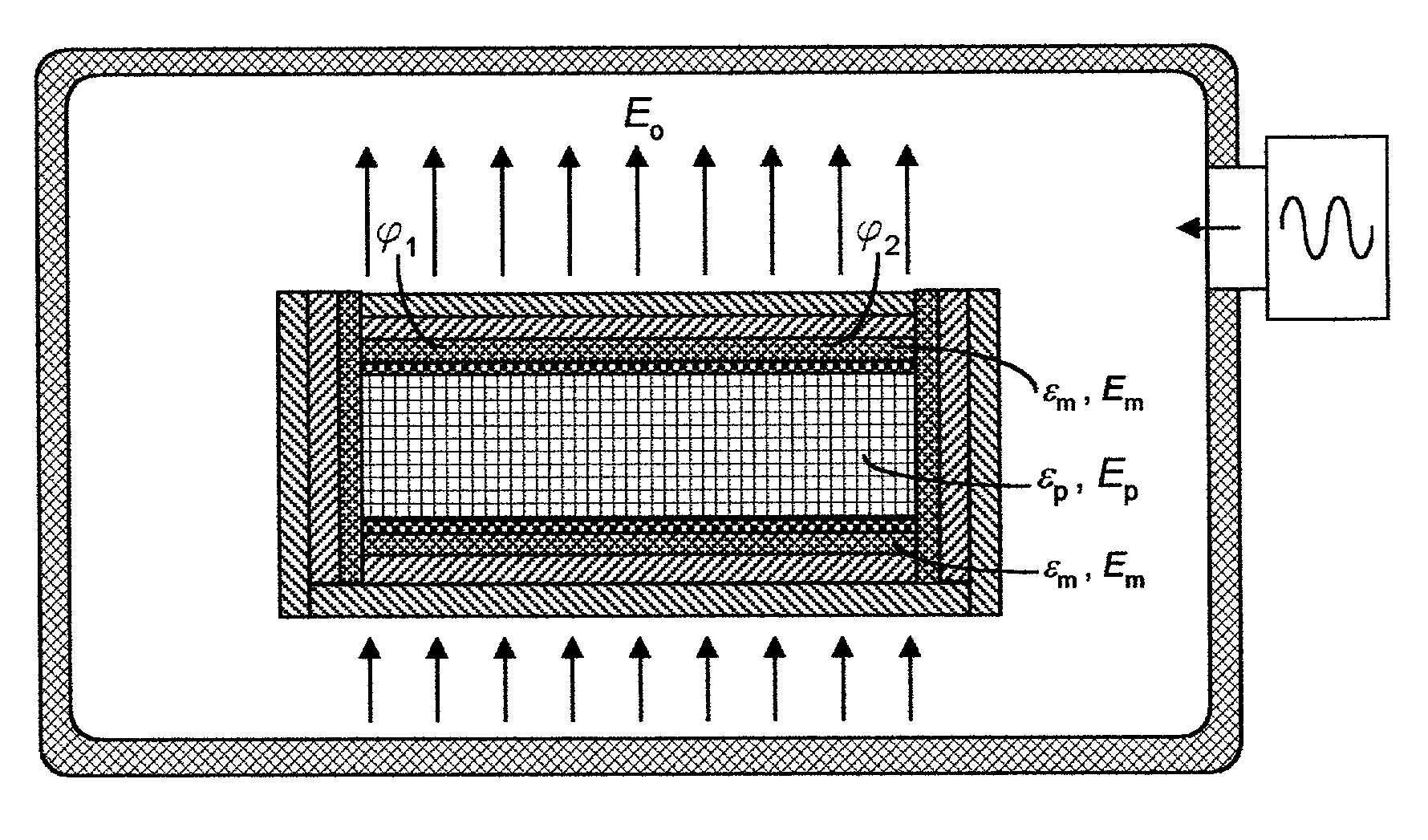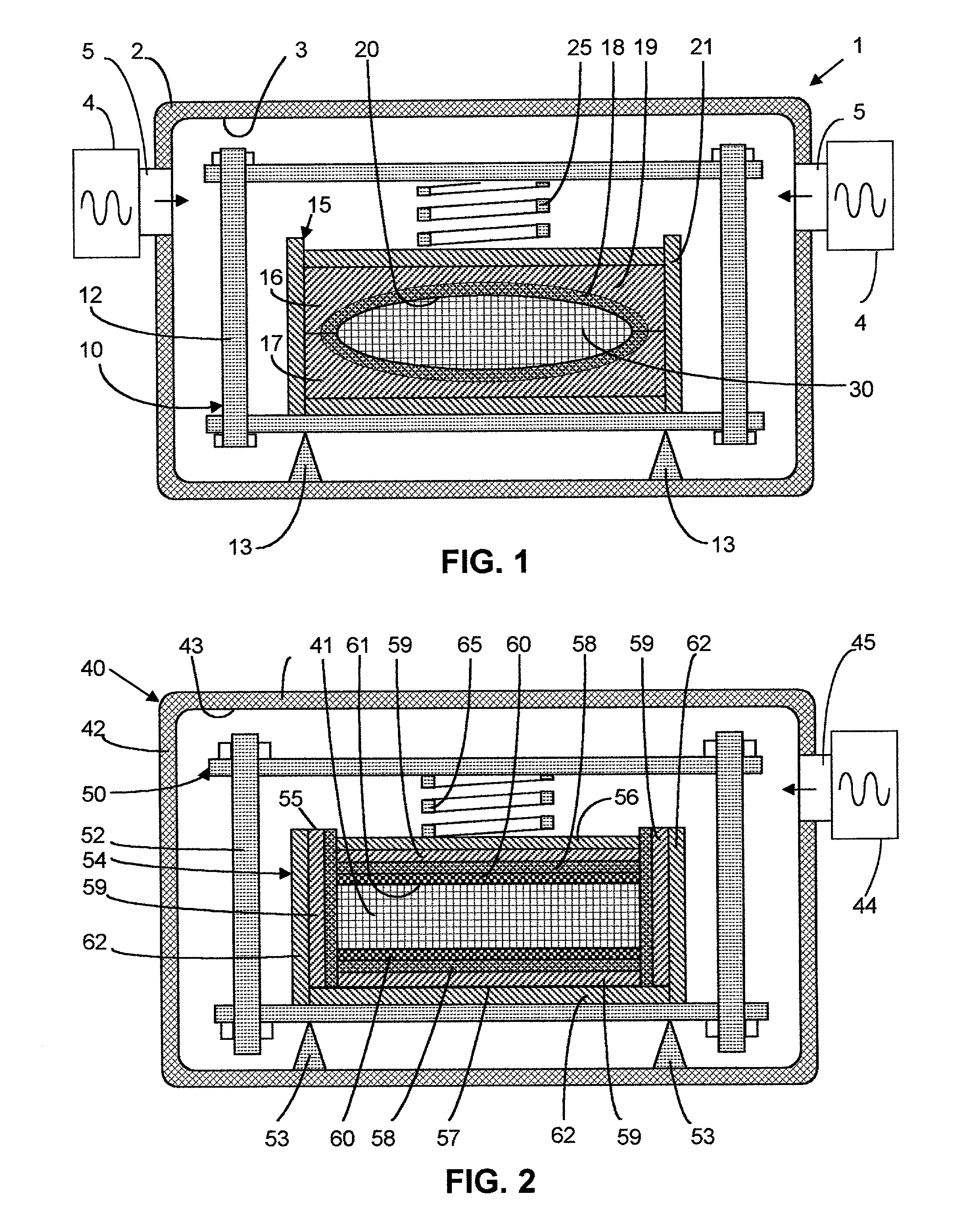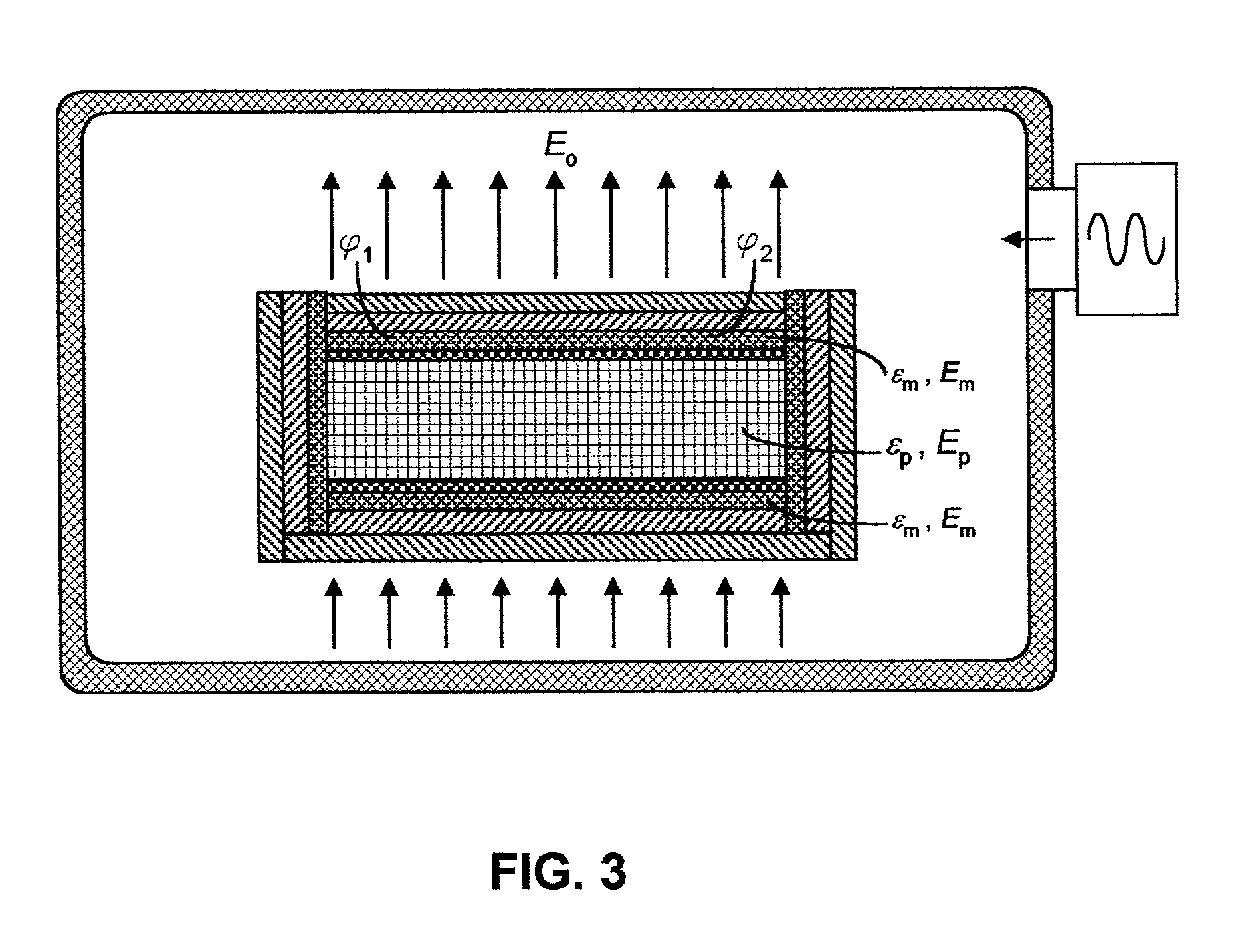Dielectric mold for uniform heating and molding of polymers and composites in microwave ovens
a technology of microwave oven and polymer, which is applied in the field of microwave processing, can solve the problems of reduced thermal variation, poor thermal conductivity of polymers, and reduced thermal variation, and achieve the effect of reducing microwave energy losses and reducing the total heat energy accumulated in molds
- Summary
- Abstract
- Description
- Claims
- Application Information
AI Technical Summary
Benefits of technology
Problems solved by technology
Method used
Image
Examples
example 1
[0067]A mold was designed for PVC (polyvinyl chloride) in accordance with the techniques described above. Pellets of PVC were poured into the cavity defined by the inner mold layer which was formed from SiC—Al2O3. The mold and PVC pellets were then heated in a uniform RF field at the frequency f 27.12 MHz for approximately 2 minutes under pressure of approximately 30 psi. The cavity was 2.7 inches in diameter and 1.5 inches deep. The uniformity of heating of the PVC pellets to form a work piece was examined visually since the molded PVC part was transparent. The obtained molded samples demonstrated uniformity of heating.
example 2
[0068]A mold was designed for TORLON thermoplastic and tested as in Example 1. Instead of pellets, two solid disks of TORLON, grade 4301, 2.7 inches in diameter and 0.5 inches thick were used for molding. After heating for approximately 3 minutes in an RF field, both disks were melted forming a uniformly solid disk of 1 inch thickness. Molding was performed at a pressure of approximately 30 psi.
example 3
[0069]A mold was designed for a low loss composite structure containing thermoset silicon resin and fiberglass fabric. About 100 layers of fiberglass fabric were covered by a thin layer of silicon resin grade V-340 made by Rhodia. This composite structure was placed into the mold cavity of 2.7 inches in diameter and heated by RF energy as in Examples 1 and 2. Curing temperature exceeded 150° F. (Fahrenheit) and after 10 minutes of heating time, the composite structure was completely cured. The cured sample had a thickness of approximately 1 inch. Curing of such structure by conventional means would require several hours since silicon-fiberglass composites exhibit a very low thermal conductivity. This test was made to demonstrate the applicability of RF / microwave processing to composite structures.
PUM
| Property | Measurement | Unit |
|---|---|---|
| radio frequencies | aaaaa | aaaaa |
| size | aaaaa | aaaaa |
| microwave frequencies | aaaaa | aaaaa |
Abstract
Description
Claims
Application Information
 Login to View More
Login to View More - R&D
- Intellectual Property
- Life Sciences
- Materials
- Tech Scout
- Unparalleled Data Quality
- Higher Quality Content
- 60% Fewer Hallucinations
Browse by: Latest US Patents, China's latest patents, Technical Efficacy Thesaurus, Application Domain, Technology Topic, Popular Technical Reports.
© 2025 PatSnap. All rights reserved.Legal|Privacy policy|Modern Slavery Act Transparency Statement|Sitemap|About US| Contact US: help@patsnap.com



